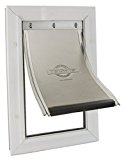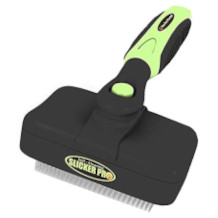Cat food purchasing advice: how to choose the right product
- What You Need to Know
- Cats are pure carnivores, so they have difficulty digesting grains and vegetables.
- When feeding dry food, it is important to make sure that the cat gets enough liquid.
- Barfing, i.e. feeding raw meat, is controversial because of the hygiene risks and possible deficiency symptoms; veterinary associations advise against it.
- Raw pork can be fatal for cats.
- When choosing a dry or wet food, make sure that it is a so-called complete food.
- For very young and old animals, as well as cats with weight problems, there are special foods that are adapted to their particular nutritional needs.
The Germans’ favourite carnivore
According to a phrase, the dog is man’s best friend, but the title of the most popular pet in Germany goes to the cat. This is confirmed by a survey conducted by the statistics portal statista in May 2019, according to which households in the Federal Republic of Germany are home to around 35 million pets. Of these, 14.8 million animals are cats. Dogs are a distant second: Germans keep 9.4 million of them.
Why are cats so popular as pets?
Many cat owners cite social, sensory and aesthetic motives as well as the companionship, cuddliness, softness of the fur and “grace” of cats as reasons for their popularity. In addition, the animals are comparatively easy to care for and naturally clean. The special relationship with the owners is also what makes them so appealing. In contrast to dogs, cats have a very individual life of their own and exhibit seemingly contradictory behaviour. For example, very intimate phases alternate with solitary ones in which the predators go their own way and a certain distance to the owner prevails. According to a study by the Rheingold Institute, this change that cat owners experience with their pets can be transferred to interpersonal relationships. This is one reason why we like them so much. In today’s fast-paced world, cats are also valued as a balance and a haven of peace. They can show adolescents in particular responsibility, security and distance maintenance at the same time.
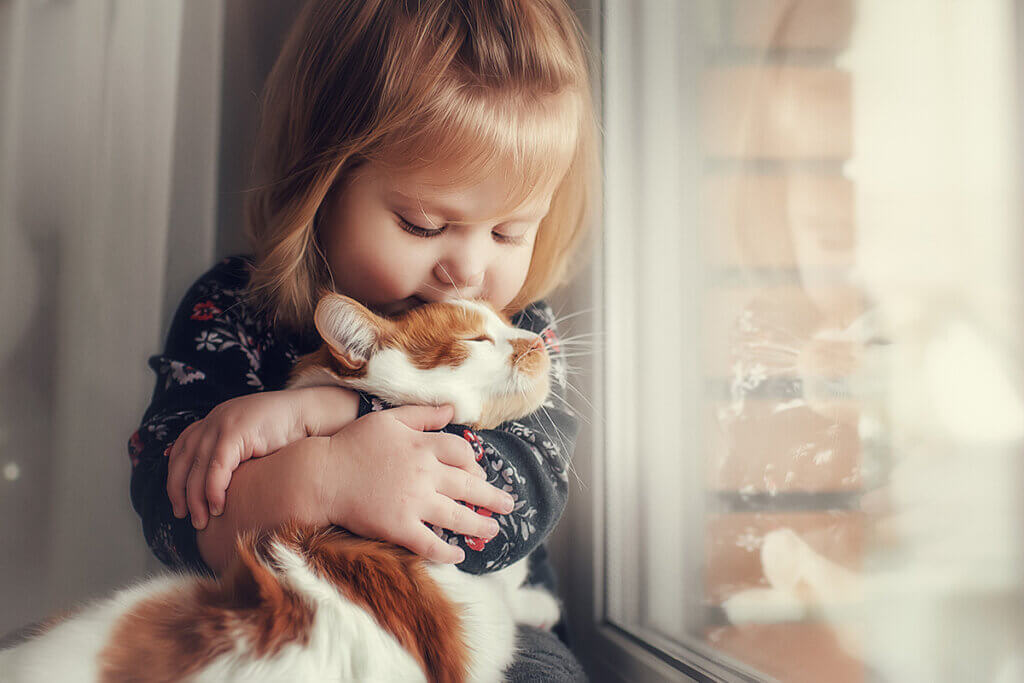
The ingredients of cat food
Just as for humans, a healthy and balanced diet is very important for cats. Cat owners will find an incredible abundance of manufacturers on the market with a wide variety of products to meet the animals’ needs. Cats are generally considered to be demanding and particular when it comes to the acceptance of food. But which ingredients are important? Find out here what makes up a balanced diet. In this comparison, we only consider complete dry or wet food.
Carnivores: Cats are pure carnivores
Cats are carnivores. Their organism is designed to break down animal proteins and convert them into energy. It is possible for them to utilise nutrients and energy from other sources, such as fruit or cereal products, to a limited extent, but to a much lesser degree than is the case with animal products. Meat is therefore one of the most important components of a cat food.
Do not feed vegetarian or vegan diets
Since cats are so-called carnivores, i.e. pure carnivores, a vegetarian or vegan diet is not at all suitable for them. What may work temporarily for dogs will very quickly cause deficiency symptoms in cats. They cannot utilise the nutrients from vegetables and grains well, if at all. This can be life-threatening. If you are unsure, contact a veterinarian.
Meat, especially muscle meat, from the following animals provides cats with animal proteins that they can utilise well:
- Beef
- Pork
- Poultry
- Lamb
- Horse
- Game
Poultry meat: healthy, low in calories and fat
Poultry meat is comparatively low in calories and fat and a very valuable source of high-quality protein. Chicken and turkey meat is also suitable for a light diet, for example if your pet has digestive problems.
Red meat: an important source of iron
Beef, pork and lamb are among the most important sources of iron and should therefore not be missing from a cat’s diet. Like humans, cats need iron for blood formation.
Meat alone is unhealthy
Lean muscle meat alone, however, is not enough. What is lacking becomes clear when you consider what substances cats, by nature predators, ingest when they eat prey. In addition to the muscle meat, they take in skin and hair, offal and the stomach contents of the prey animal, and receive carbohydrates, fat, vitamins and minerals as well as proteins. A good cat food must replace the prey animal as a whole. So the other food components must also be added to the meat portions so that the diet is complete.
Fish: healthy as a supplement
Fish is popular with cats. Therefore, cat food with ingredients such as tuna, salmon or trout may end up in the bowl. Lean muscle meat or fish alone do not make up a complete diet. The comparatively low proportion of connective tissue makes fish a digestible morsel for cats with digestive problems. Not suitable, however, is canned tuna, which cat owners use in salads, for example. Tuna pickled in its own juice or in oil contains too much salt and, if fed regularly, can put a strain on the kidneys of predatory cats.
Pay attention to the quality of meat and fish
As with humans, when choosing meat and fish, look for healthy animal husbandry or a healthy stock and gentle fishing methods to do justice to the environment.
Cereals
Grain is a good source of energy, especially for humans. It provides cats with important amino acids and, thanks to the fibre it contains, aids digestion. However, it can lead to increased intolerances, which is why cat food with a grain content is not suitable for every cat.
Vegetables
Unlike dogs, cats cannot digest vegetables. Certain types such as onions, garlic and chives can even lead to poisoning.
Milk
If milk and dairy products are listed in the ingredient list, they are often residues from dairy production that offer no nutritional value to the cat. Newborn kittens are suckled by their dams. The milk is precisely adapted to the needs of the house cat, which is not the case with other types of milk, for example cow’s milk. Adult cats cannot metabolise milk properly.
Sugar
Sugar has no place in cat food either. It is an unnatural and harmful filler that leads to secondary diseases such as caries and diabetes. Sugar is often used to mask bad smells of low-quality meat or to give the product a more appetising, darker colour.
Nutrients, minerals and vitamins
Taurine is an important amino acid that is essential for the cat’s metabolism, digestion and fertility. Cats can only extract a small amount of taurine from fish or meat, so taurine should always be added to cat food.
Unlike dogs and horses, cats cannot synthesise arachidonic acid, an unsaturated fatty acid. Free-ranging cats ingest this substance via mice. It is also found in pork, beef and poultry.
Vitamin A is contained in fresh beef liver, for example. However, 10 grams of liver a day are quite sufficient to cover the need for vitamin A. In the meantime, many cat food products are enriched with vitamin A. Therefore, when buying, look for variety. Not every product has to contain the additive.
Phosphorus – added in moderation – contributes to the health of cats. A long-term overdose can put a strain on the kidneys. The European Pet Food Industry Association recommends that cat food should contain at least half a gram of phosphorus per 100 grams of dry matter. There is no upper limit so far. However, cat owners can orientate themselves on the lower limit and make their purchase decision dependent on it. Some cat foods contain twelve times the recommended amount, i.e. six grams of phosphorus.
Calcium is necessary for building and maintaining bones.
Is the cat sufficiently supplied?
You can tell if your cat is supplied with all the necessary ingredients by the fact that it grows a shiny coat, does not have flaky skin, has an alert look and defecates solidly.
Types of food
As a pet owner, you are confronted with an almost confusing variety of food types. You have the choice between dry and wet food. In the following we explain the advantages and disadvantages of the two types of food, clarify whether it makes sense to barf cats and answer the question of whether and if so how many snacks you may give your cats.
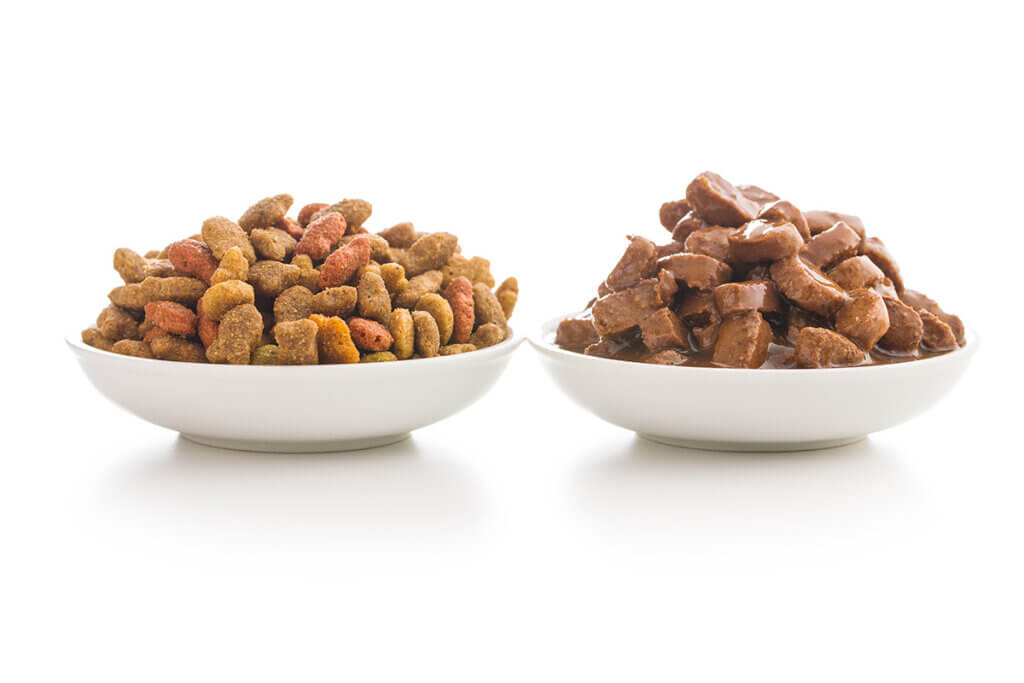
Dry food
The question of whether dry or wet food is best and which food is healthier for your cat is a controversial one. One danger with dry food is that cats do not absorb enough moisture. Their origin means that cats get most of their fluid from the prey they eat and drink little extra water. Dry food contains about 10 percent water, wet food between 70 and 80 percent. So if the cat does not drink enough when fed only dry food, it will pass less urine. This favours bladder infections. The higher urine concentration also contributes to the formation of kidney stones. Therefore, if you feed your cat dry food alone, you must make sure that they always have enough water available and that they drink it. Wet food is therefore recommended for cats who do not like to drink much.
An advantage of dry food, on the other hand, is its longer shelf life. A portion can be left in the bowl for a day without worrying about it. This is an advantage for working pet owners whose cat is alone during the day. In addition, the bowl and the feeding area are easier to clean. Another advantage is that dry food has a less intense odour than wet food, which is more pleasant for cat owners, not only in warm temperatures.
A disadvantage of dry food is that it contains less meat and more grain than wet food, which makes it less species-appropriate. Worse still, some cats don’t like it so much that they sometimes leave it behind. But it can also go the other way. As dry food is usually offered in large bags and not in portions like wet food, there is a risk of overfeeding. Pet lovers should bear this in mind and rather use kitchen scales instead of just eye measurement.
Does dry cat food clean the teeth?
Dry food is often said to have a cleaning effect, which would be beneficial for the cats. However, there is no proof that this effect actually occurs with commercially available dry food. Special chewing products or fresh turkey necks are better suited for cleaning teeth.
Pro Points
- Long shelf life
- Less inherent odour
- Easy cleaning
Drawbacks
- Low moisture content
- Less tasty
- Often lower meat content
Wet food
Wet food contains about 80 percent moisture, so a large part of the daily liquid requirement is already covered by the food.
Wet food also has a more intense taste and is therefore preferred by many cats. In addition, the food is easier to portion due to the individual bags, bowls or tins, so that overfeeding is less likely to occur with wet food. In addition, the protein content outweighs the carbohydrate content, which reduces the risk of fatty degeneration.
A disadvantage, however, is that wet food spoils comparatively quickly, especially on hot days. For working people who have to leave their pets alone for a few hours during the day, it is therefore only suitable to a limited extent.
Pro Points
- High moisture content
- More intense taste
- High meat content
- Easy to portion
Drawbacks
- Rapid perishability
Complete feed versus supplementary feed
In the wild, foraging for food is not that easy for predators. They have to hunt for their food on their own. Domestic cats are more comfortable: their owners provide them with special cat food that contains all the essential nutrients they need due to their special physiology.
There are differences in composition and quality that cat lovers should be aware of. Complete food is a universal food that contains all the important ingredients so that masters and mistresses do not have to add anything. In contrast, there are supplementary foods for animals with special needs. These can be young and old animals that tolerate special food compositions better, or cats for which a vet advises the administration of a certain supplement. In our guide, we restrict ourselves to the complete food. It should be a mix of proteins, fats, minerals, vitamins, essential fatty acids and taurine.
Should I barf my cat?
Barfing is a method of feeding carnivorous pets. Originally, the method was developed for domestic dogs. Barfing involves making up portions of fresh or frozen meat, offal, bones and fish. The food is supplemented with fruit and vegetables and fed raw. Other additives are possible. A sound knowledge of cat physiology and animal nutrition is necessary for the needs-based composition. However, there are no nutritional advantages compared to good ready-made food. On the contrary, malnutrition can occur and there are dangers from pathogens, both for the fed animals and their owners. For this reason, veterinary organisations are clearly against barfing.
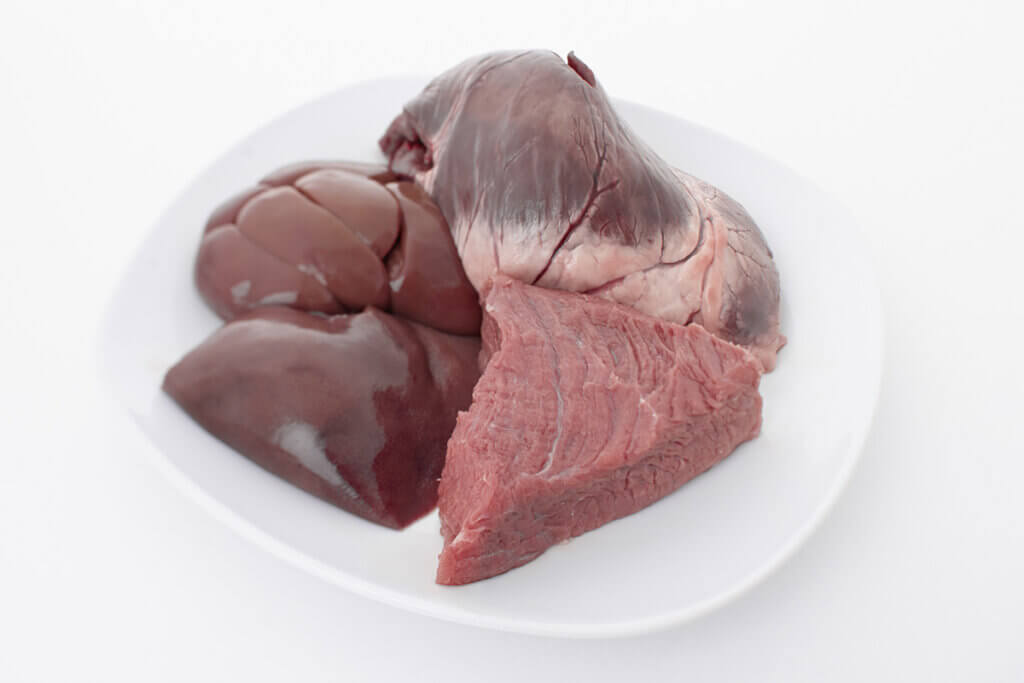
Treats and snacks for in-between meals
Treats are good for cats for several reasons: They attract the animals’ attention, reward certain behaviours and help to serve the natural play instinct. Snacks with vitamins lead to general well-being and complement the main food. Dental care products help clean the teeth and strengthen the dentition. Snacks with malt content help with digestion. The malt transports hair out of the digestive tract that cats swallow when brushing their fur and that can twist into balls in the stomach.
This supplementary food should only be fed in moderation so that the cat does not exceed its calorie requirements. To keep the craving for the treats high, you can vary different snacks: Crispy snacks to chew, soft morsels or pastes to lick up. There are products for allergic animals as well as for those lacking a certain food ingredient. Read the ingredients and dosage recommendations carefully and adjust the type and amount accordingly.
Organic food
Organic feed must only contain meat that is of food quality. While less strict rules apply in conventional feed, organic feed ensures that the processed animals were fed organic feed and had sufficient space when reared. These strict guidelines are regularly checked. In organic products, artificial flavourings and flavour enhancers are also banned, which results in a fresh and full taste. Sugar and gluten are also not included. This type of food is therefore much more digestible for the gastrointestinal system.
Choosing organic food is associated with higher costs. In return, however, your pet will receive a valuable food that is beneficial to its health.
Pay attention to the special features when choosing food
You should be particularly attentive when choosing food if your pet is in a special phase of life. There are special products for young and old animals that are adapted to their nutritional needs. Special diets may be necessary for overweight, sick and sterilised animals. Other reasons for a change of diet are, for example, an underactive kidney or a sensitive digestion. For animals with apparent nutrient deficiencies, a supplementary diet may be appropriate.
Young cats
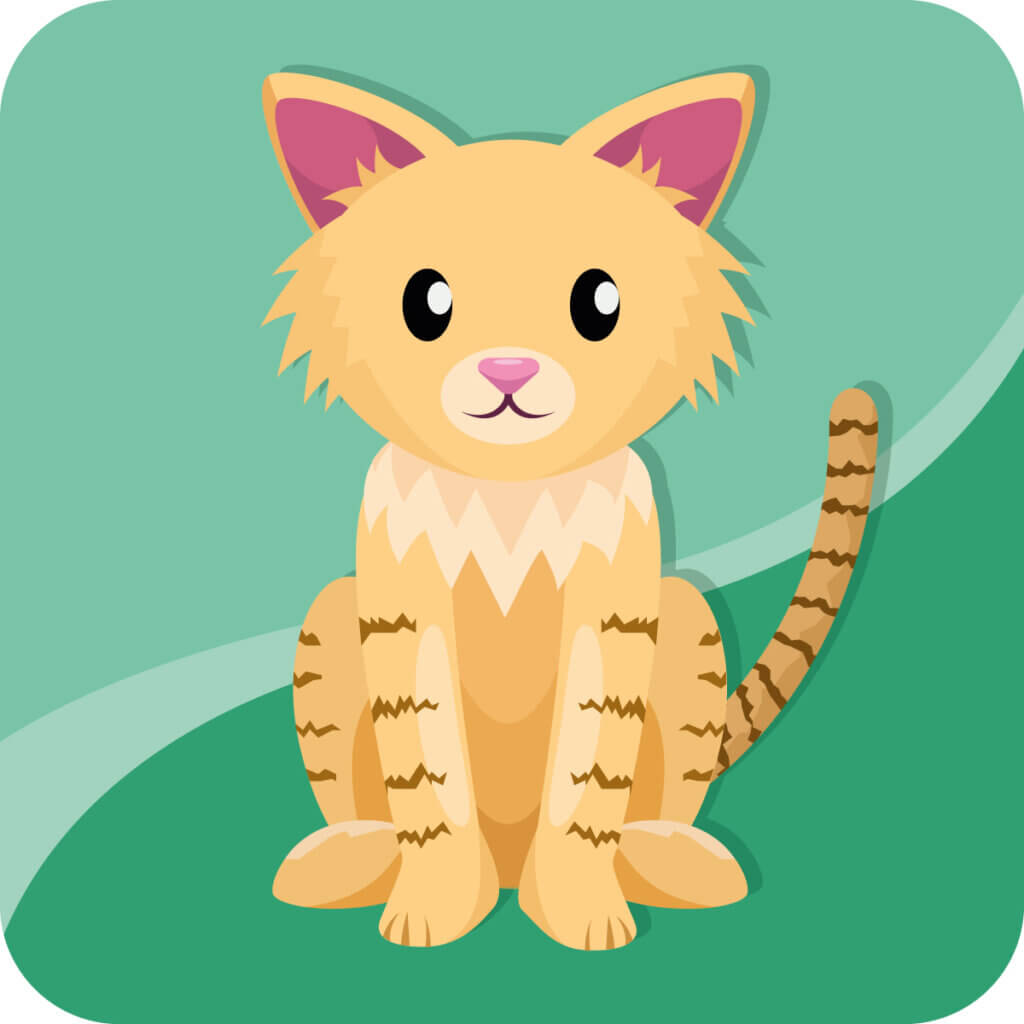
You should generally offer wet food to a kitten. The high moisture content reduces the risk of constipation. In addition, growing tigers need a different mix of nutrients to grow ideally. Such special foods are often labelled Junior or Kitten.
Older cats
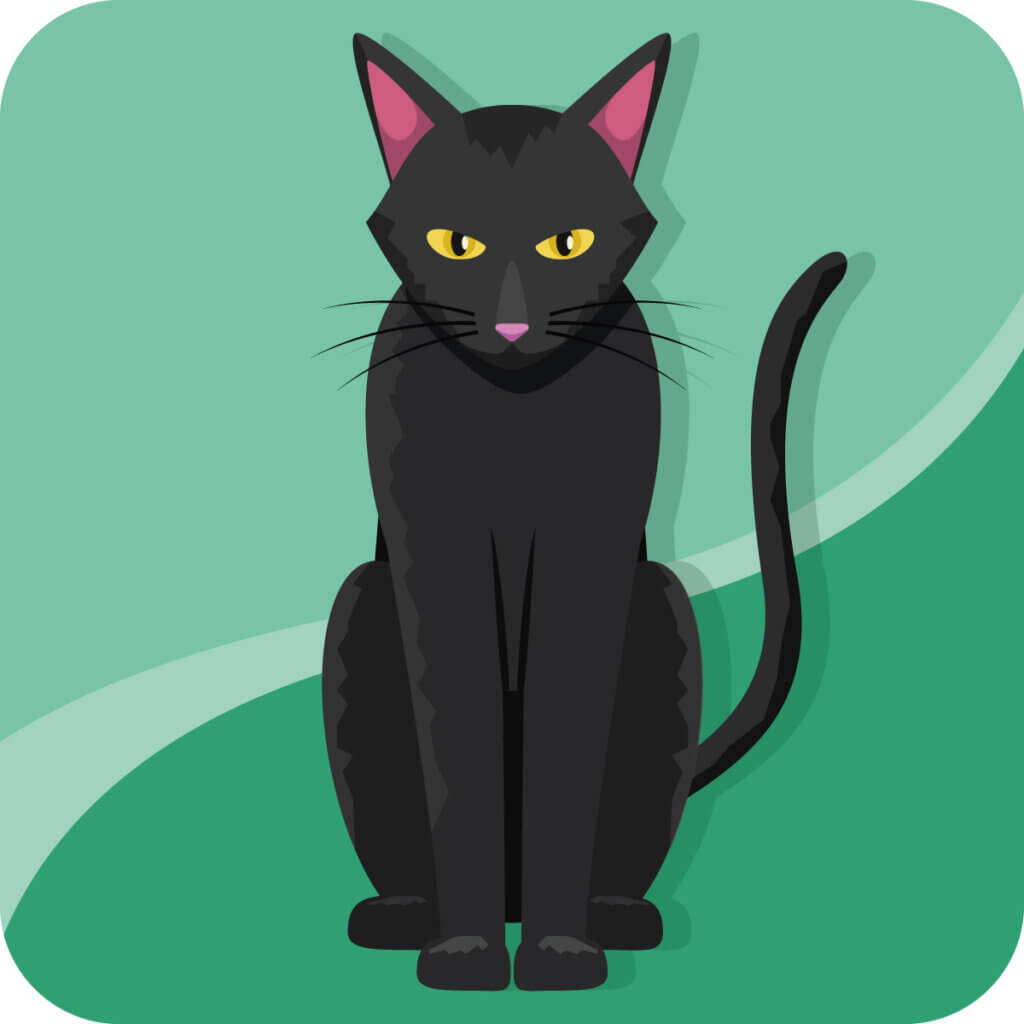
For older cats, there are a few factors to consider when choosing a suitable food. For example, toothless senior carnivores cannot do very much with a dry food. In addition, there are changes in the metabolism of the animals that affect the need for nutrients. It also happens that cats develop new preferences regarding their choice of food as they get older. The ageing process begins around the age of eight. From the age of twelve at the latest, they are considered senior citizens.
Supplementary food
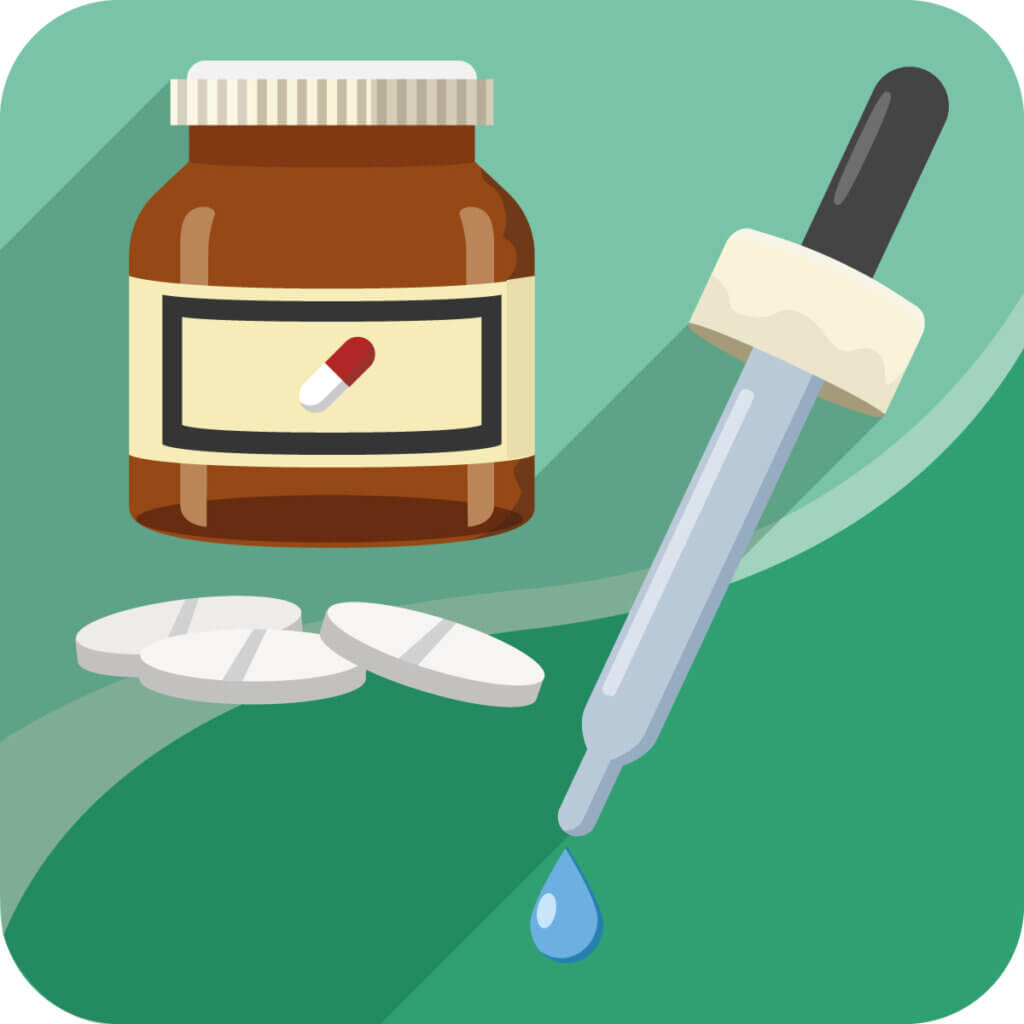
Supplementary feed is feed that has a higher content of certain substances, but is not suitable for use as a complete feed. It is therefore more suitable as a snack or treat, but would lead to a nutrient deficiency if fed alone. It should make up a maximum of one fifth of the diet. Such food is also called pure meat can.
Cat milk
As a dietary supplement, there is special cat milk that you can give your house cat from time to time. This milk is lactose-reduced, adapted to the cat’s nutritional requirements and often contains the amino acid taurine. The latter substance is elementary for the cat’s health. Cat milk also contains vitamins and calcium, substances that benefit pregnant and nursing cats in particular. Remember, however, that cat milk is a supplementary food and does not replace drinking water.
Diets
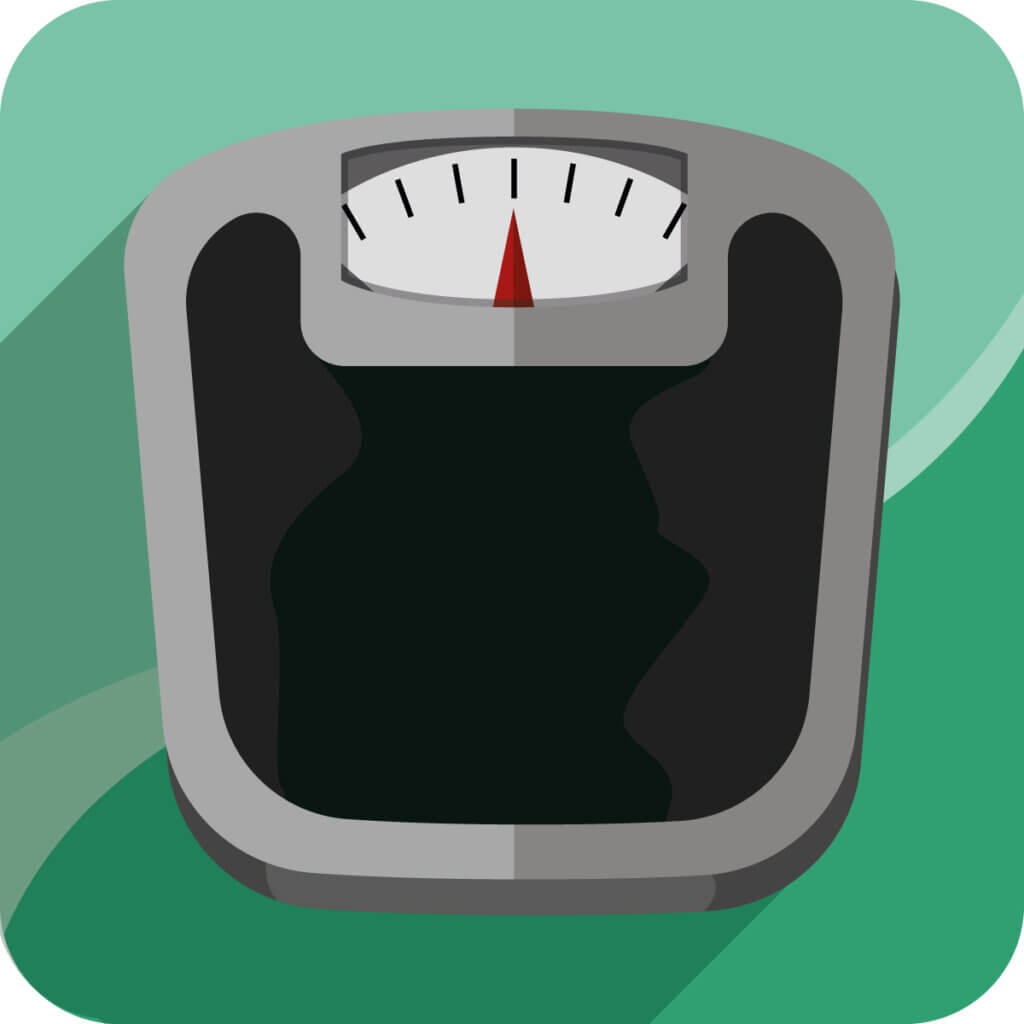
Being overweight severely limits cats’ quality of life. They are usually very agile, climbing and jumping around indoors and outdoors. A disease, often diabetes mellitus in older cats, may also require a change in diet. The same applies to sterilised velvet paws, animals with renal insufficiency and those with a sensitive digestion. Talk to your vet about what measures are necessary.
Under no circumstances should fasting days be inserted!
Fasting is very dangerous for cats that are overweight. If you do not give your cat food, it will fall back on its fat reserves to cover its basic energy needs. However, animals need protein for this, which is often lacking when they are on a diet. This has devastating effects on liver metabolism. The organ is confronted with a lot of fat that it cannot metabolise. As a result, its function is paralysed. Without intensive treatment, such liver damage is often fatal.
Tips for feeding
When feeding, there are a few points to keep in mind to ensure that your pets do well and stay healthy. This concerns, for example, storage, the amount of food, a change of feed and practical aids such as food dispensers. We provide some helpful tips below.
Amount of food
There is no general answer to how much cat food you should feed your pet. The nutrient content varies depending on the type and variety of food. In the case of high-fibre food, a large proportion ends up unused in the litter tray. In addition, the need for nutrients varies depending on the breed, weight and age of the cat. Pay attention to the recommended amounts of food on the package.
If the food does not come in portion sizes, but in a large package, it is advisable to use a kitchen scale to avoid under- or over-dosing the food. In general, you should be aware that cats in the wild do not eat one or two meals a day, but rather several small bites: Whenever their hunting instinct rewards them with a treat. Feeding several small portions throughout the day is therefore very sensible.
In general, when giving wet food, make sure that you take the bag or tin out of the fridge a few minutes before feeding. This gives the food more flavour. Warming up the food to room temperature also prevents stomach problems.
Food and water dispenser
Since it is difficult, especially for working people, to provide the cat with many individual portions of food throughout the day, a food dispenser is a very sensible purchase. Models where new food is added as soon as the portion has been eaten are only suitable for dry food and cannot be used for rationing, as food is continuously added. With these dispensers, there is also a risk of the animals becoming obese.
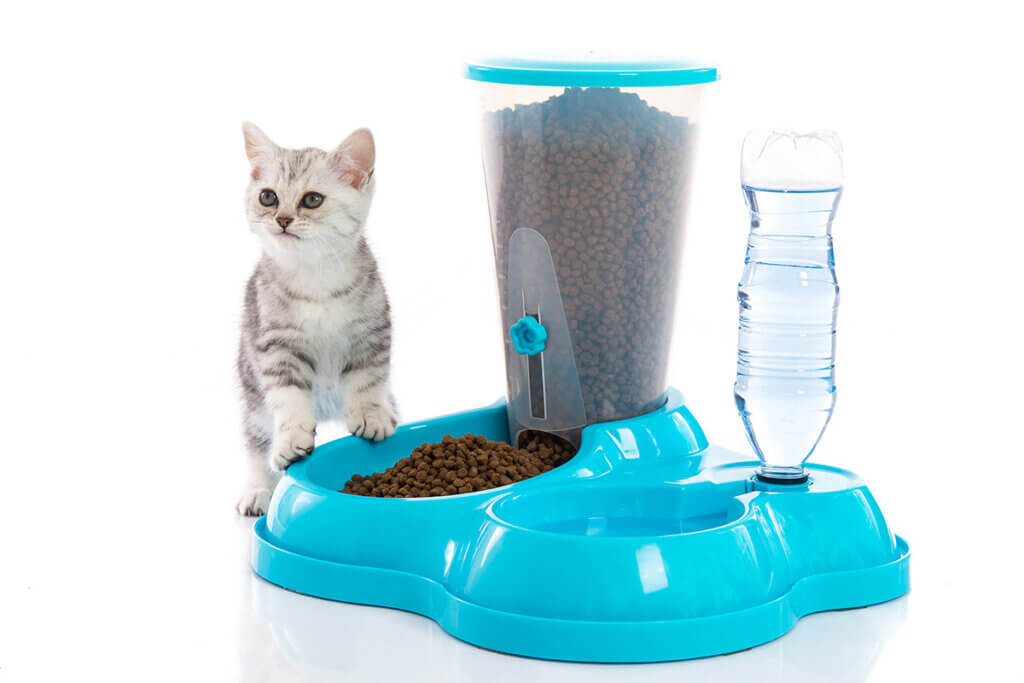
Better are feed dispensers that are time- or app-controlled. They only release a drawer or open a flap after a certain period of time or when triggered manually, so that the pets can reach the food. Some models even have a thermo-electric cooling function, so you can also fill wet food that won’t spoil even on warmer days.
A water dispenser, on the other hand, should have a large volume so that the pet has as much water as it wants to drink.
Change of diet
Changing the food of a cat is often a problem, because cats are very fussy about their food. If you try to change to a different food, it is not uncommon for it to be spurned. This is less tragic with dry food, but wet food must be discarded after a certain period of time so that your darlings do not get sick.
In order for a cat to accept the changed menu, you can try to change gradually. For example, you can try starting with 10 percent new food and 90 percent familiar food. It is best to gradually shift these percentages over a period of several weeks until the cat’s diet consists entirely of the new food. This way, the cat’s organism can adjust more gently to the new food components and the cat is less likely to leave the food.
Occasional vomiting is not a problem at first. This is the cat’s attempt to rid itself of harmful substances. This can be eaten grass, but also swallowed hair or incompatible food components. However, if you are unsure, it is better to contact a vet.
What must cats not eat?
When feeding a cat, there are a number of no-go’s that you should avoid as a matter of urgency. Incorrect feeding can seriously damage the health of your animal companions. Just like for dogs, chocolate is highly toxic for cats. The reason for this is the intolerance of theobromine, a substance contained in the cocoa bean. Furthermore, salted or strongly spiced food, raw meat and raw fish can be life-threatening for your cat. This is especially true for raw pork. Onion plants and legumes are problematic because cats usually cannot tolerate them. They cannot digest the vast majority of other vegetables. Sweets and baked goods are just as unsuitable as sausage and smoked meat.
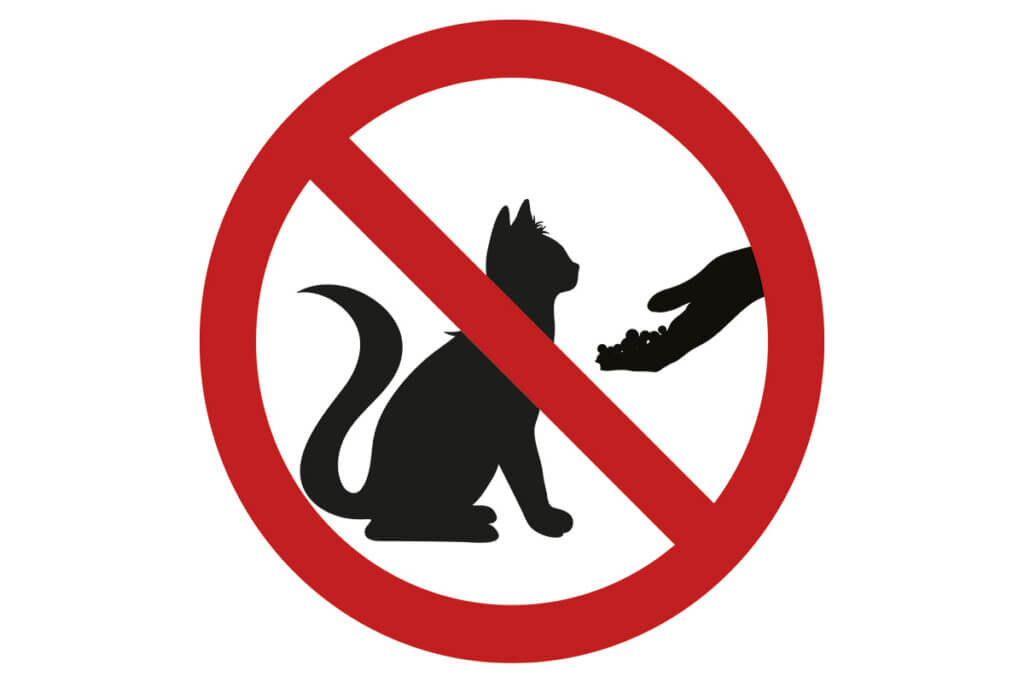
How dangerous is chocolate for cats?
If you notice that your cat has eaten chocolate, contact a vet as soon as possible. He can decide what steps to take based on the type and amount of chocolate described. The darker the type of chocolate, the more theobromine it contains and the more at risk the pet is. Do not wait until the first signs of poisoning appear and do not induce vomiting! Giving charcoal tablets, on the other hand, is useful because there is a high chance of binding the poison in the digestive tract. This prevents absorption into the organism and the substance is then excreted again via the faeces. The dosage should be one gram of carbon per kilogram of body weight of the cat.
Are cats allowed to eat dog food?
The composition of cat food is specially adapted to the needs of the velvet paws. The protein and fat requirements of cats are significantly higher than those of dogs. If you were to feed your cat only dog food, this would lead to deficiency symptoms such as reduced eyesight and a dull coat. However, if your cat picks up a little something from the dog bowl, you don’t need to worry. Separating the animals at feeding time prevents incorrect feeding. You can teach dogs that the cat bowl is off-limits by giving them commands. Alternatively, place the cat food in an elevated place that is no problem for the house pets, but out of reach for dogs.
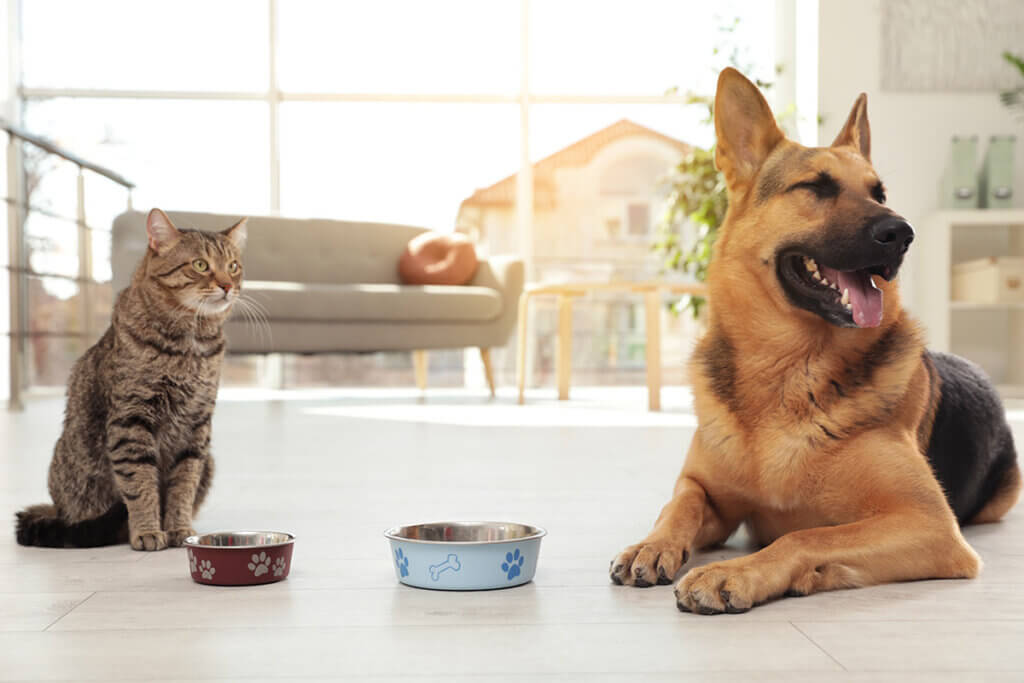
Manufacturers and brands
The choice of manufacturers, brands and varieties in the cat food segment is quite large. To help you find your way around, we have listed a selection of the best-known and most popular products on the German market. In addition, we give a small outlook on manufacturers who have special products in their portfolio.
Whiskas
Whiskas is probably the best-known cat food brand in German-speaking countries. It belongs to the US company Mars Incorporated. The brand name alludes to the English word for whiskers, “whiskers”. The company has been offering the food products in Germany since 1962. The brand became well known through the TV advertising slogan “Cats would buy Whiskas”. The large product range includes both wet and dry food, lactose-reduced cat milk and various snacks.
kitekat
Also a brand of the Mars Group is the well-known wet cat food line kitekat. The name refers to the target group, kittens and cats. Compared to the larger umbrella brand, Whiskas, the range of wet food clearly outweighs the dry food section. kitekat completely avoids the use of artificial flavourings, artificial colourings and preservatives.
Purina
Purina is a company founded in 1905 that primarily produces pet food. After various takeovers, Purina is now part of the Nestlé Group. It offers nutritional products for dogs and cats. In the case of products for cats, the range includes several sub-categories. The Beyond series is a high-quality premium dry food without added wheat and without artificial colours, flavours or preservatives. Under Felix Snacks, the company sells several crunchy snacks, fillet snacks and sauces that provide variety in the bowl. Purina PROPLAN is a premium series of dry and wet foods that are primarily sold in veterinary practices and pet shops. The ONE range offers dry and wet food for animals of all ages and cats with special nutritional needs. In the Gourmet line, the manufacturer bundles special wet foods with select ingredients. Under the felix brand, the manufacturer also offers both dry and wet food.
Royal Canin
Royal Canin is an international manufacturer of cat and dog food based in France. The brand belongs to Mars Incorporated. The veterinary range includes special products such as diet and diabetes food, while the specialist retail range includes food for cats of all ages. Also available are food mixes specially adapted to the needs of pedigree cats.
Happy Cat
Happy Cat stands for cat food without vegetable proteins. Animal proteins are included. Preservatives, colourings and flavourings are not included. The brand stands for dry, wet and diet food made in Germany.
animonda
animoda is a manufacturer of high-quality wet food and snacks for cats and dogs made from selected ingredients. In addition to special gourmet products, Carny, a wet food consisting of meat and taurine, without added cereals, is on offer. With the Integra Protect series, the Lower Saxony manufacturer also offers a special diet food programme. Milkies, the milk-filled crunchy pillows, complete the range.

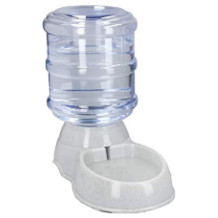

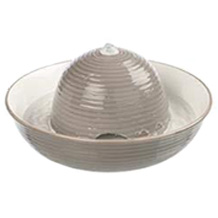
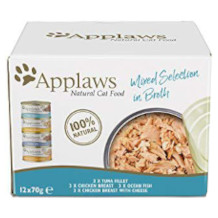

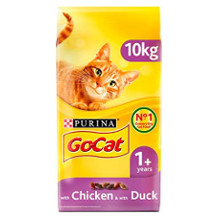
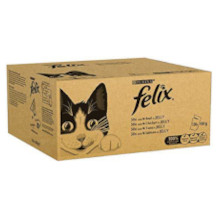
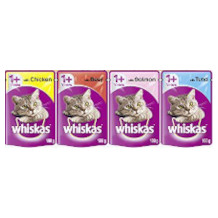


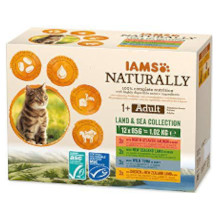
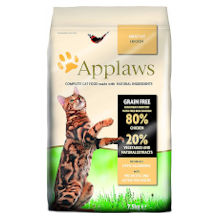
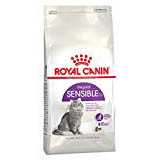
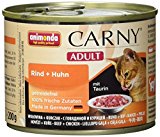
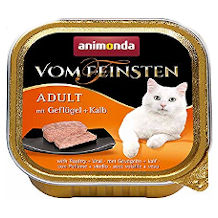
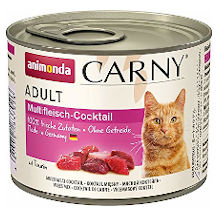

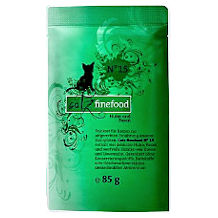




 3,424 reviews
3,424 reviews



